VERY RARE! Original 1903 New York City - East Williamsburg - Brooklyn Early 1900's NYC Blueprint Map (PLATE 24)
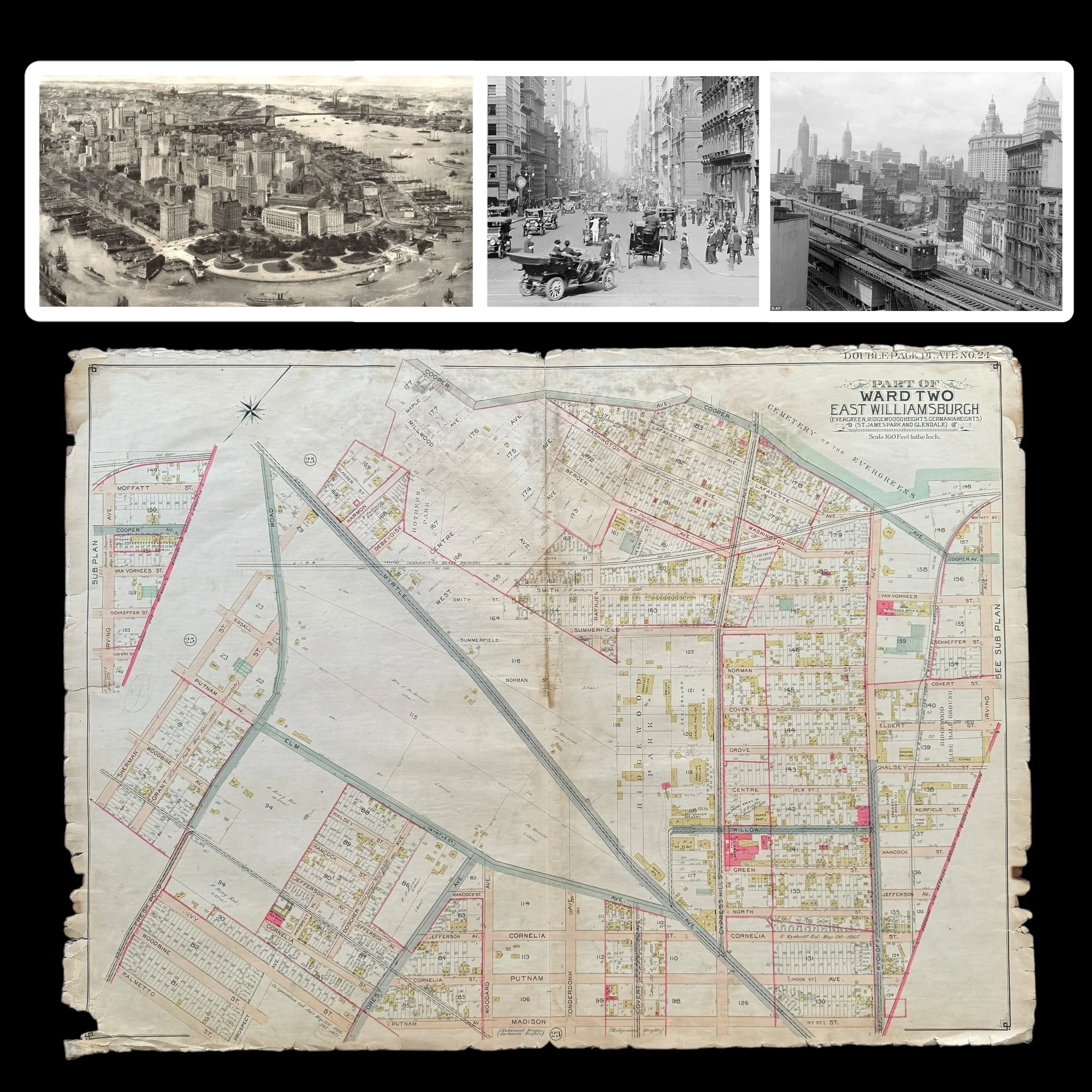
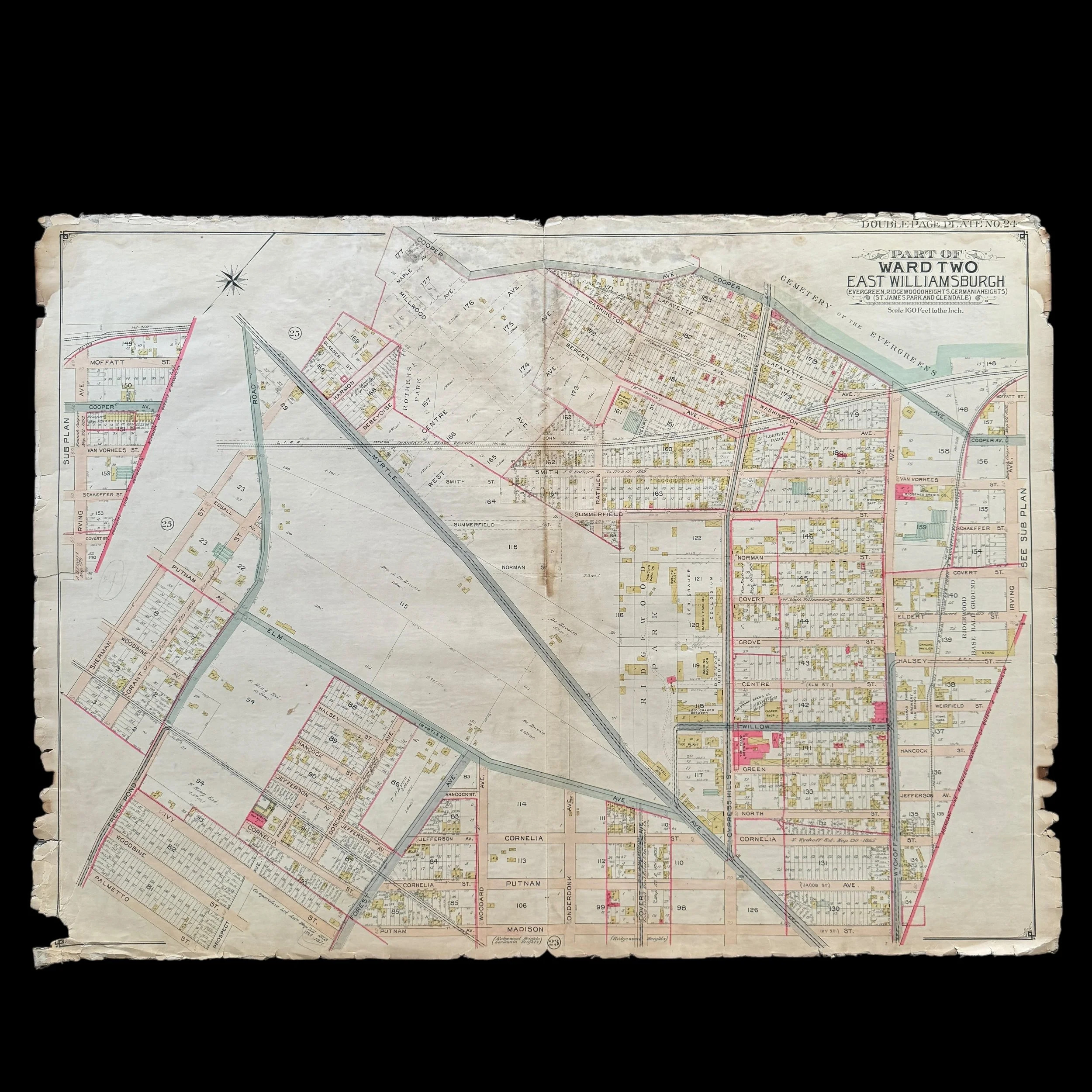
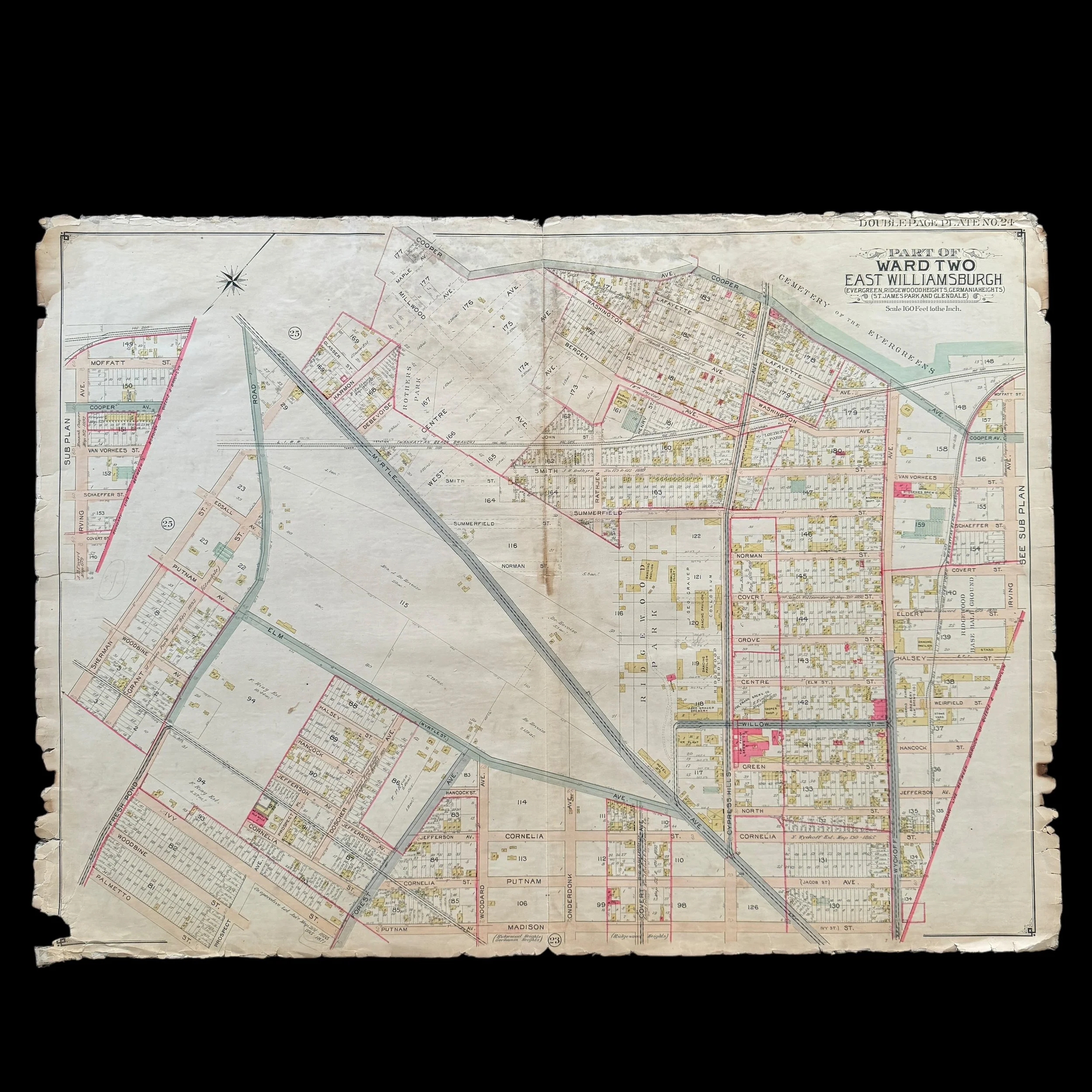
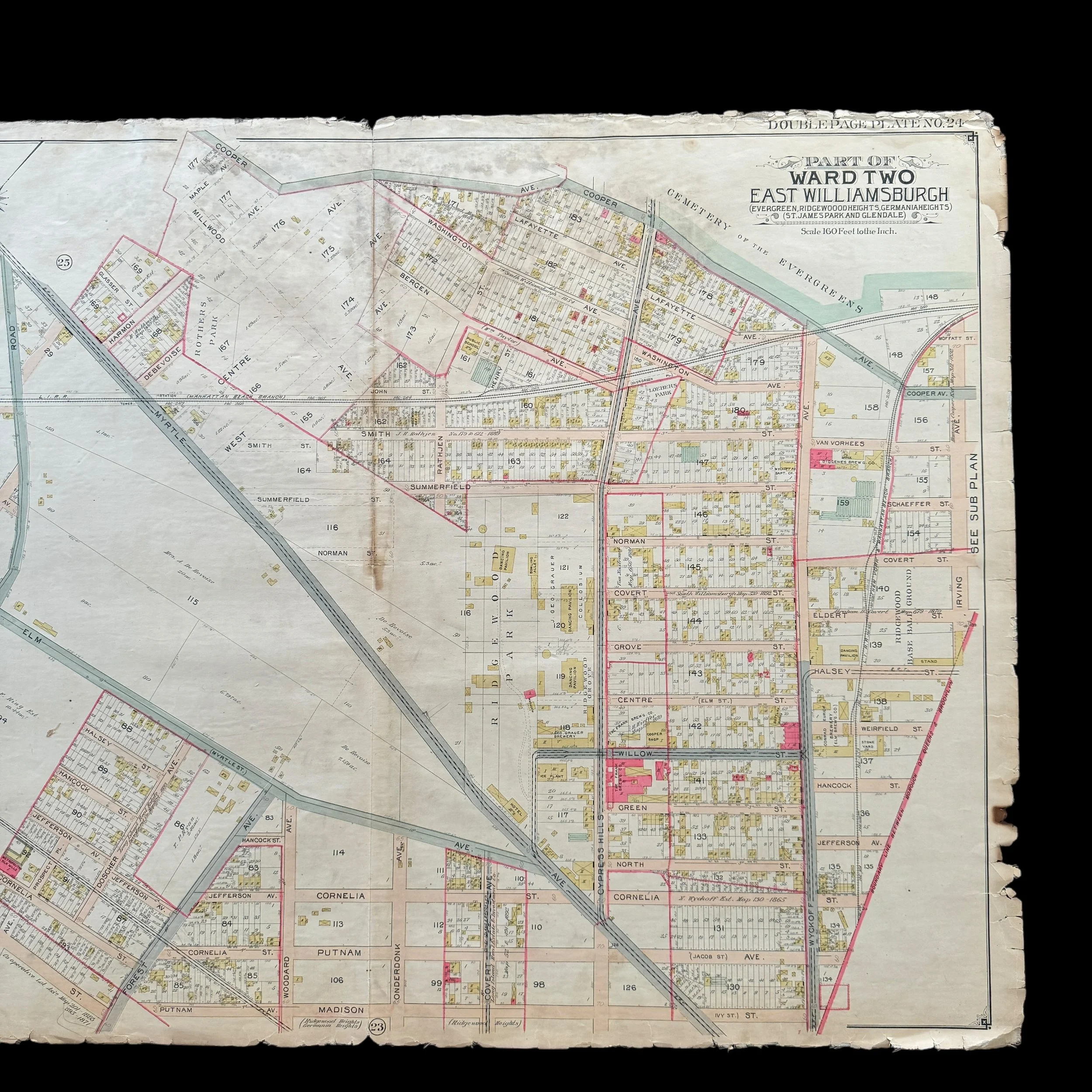
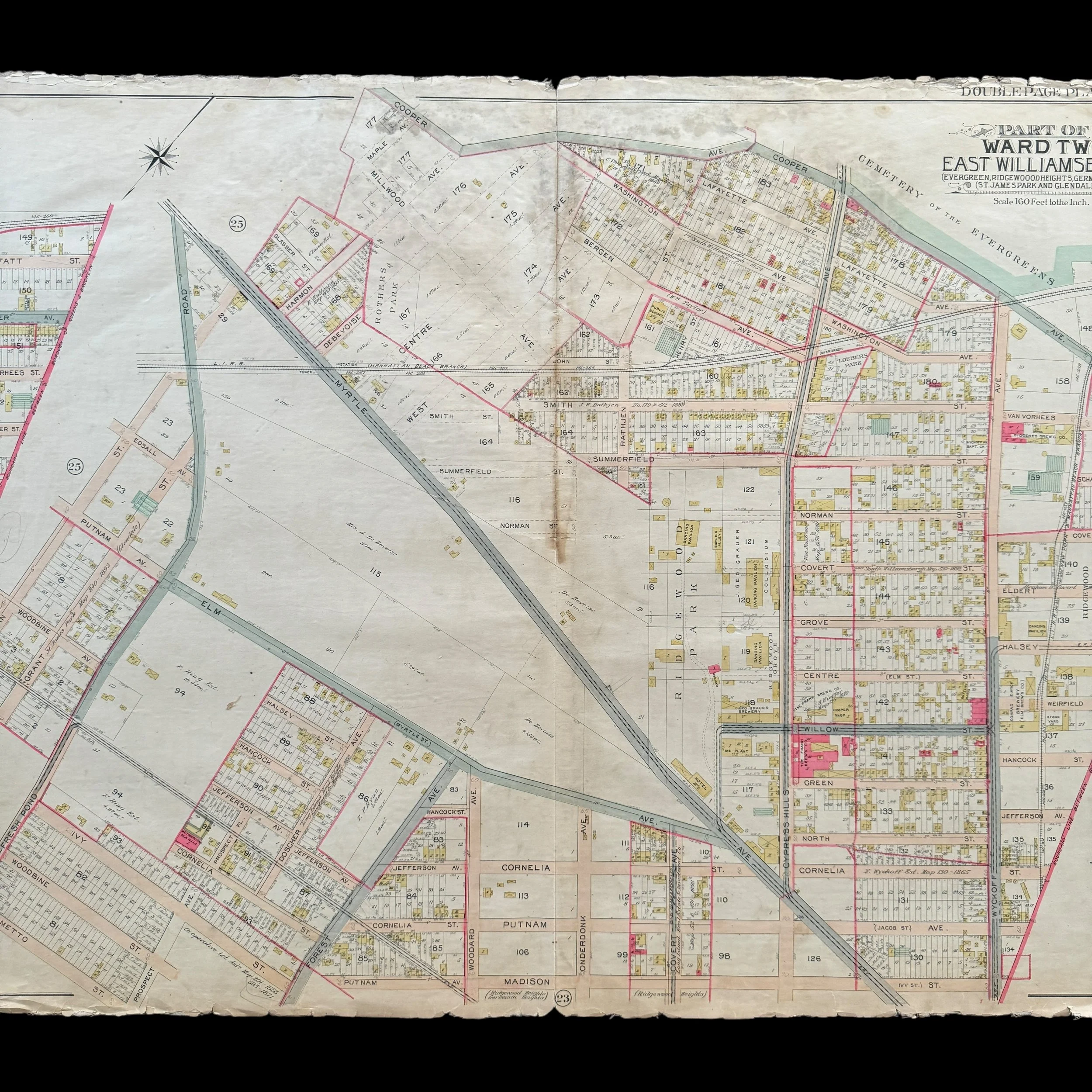
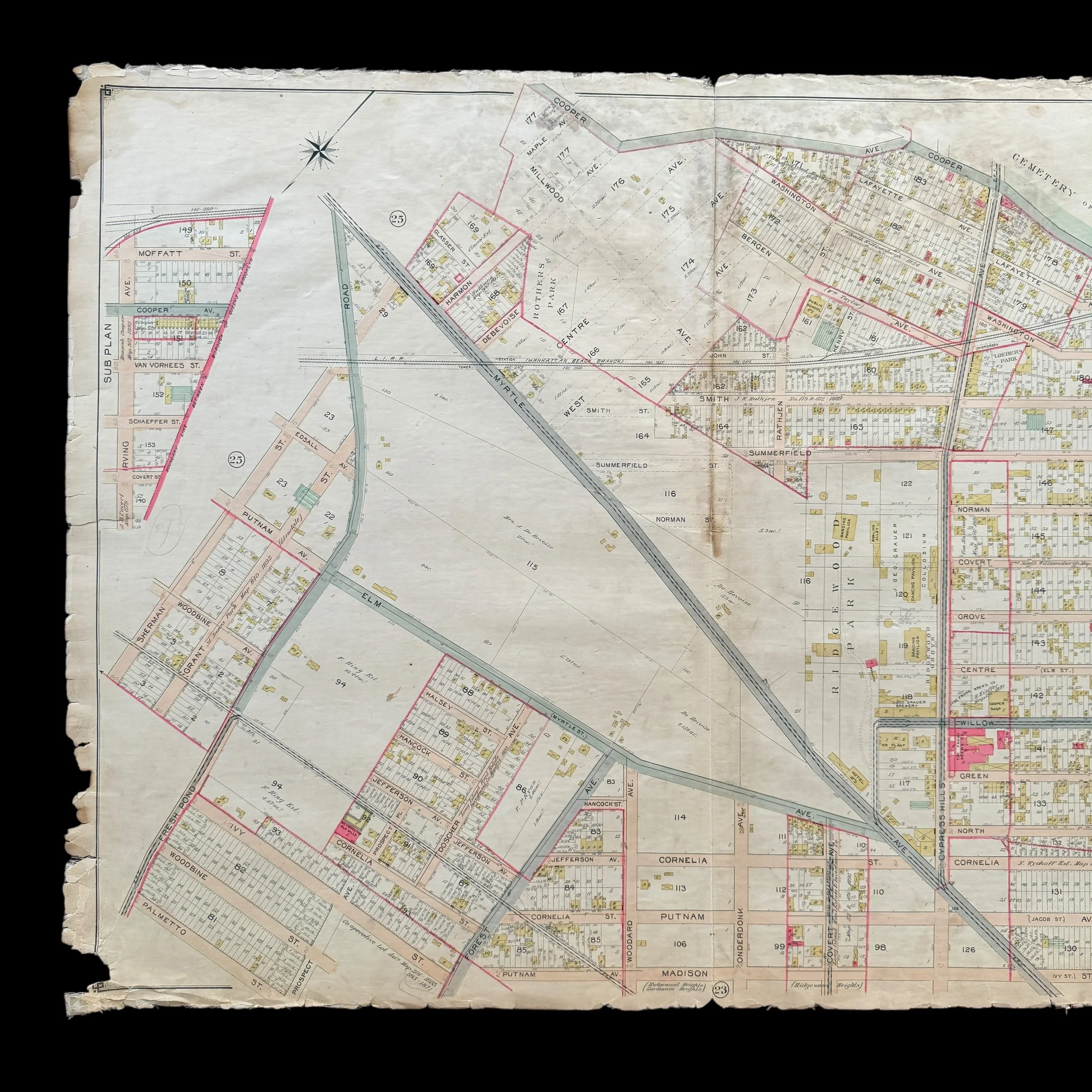


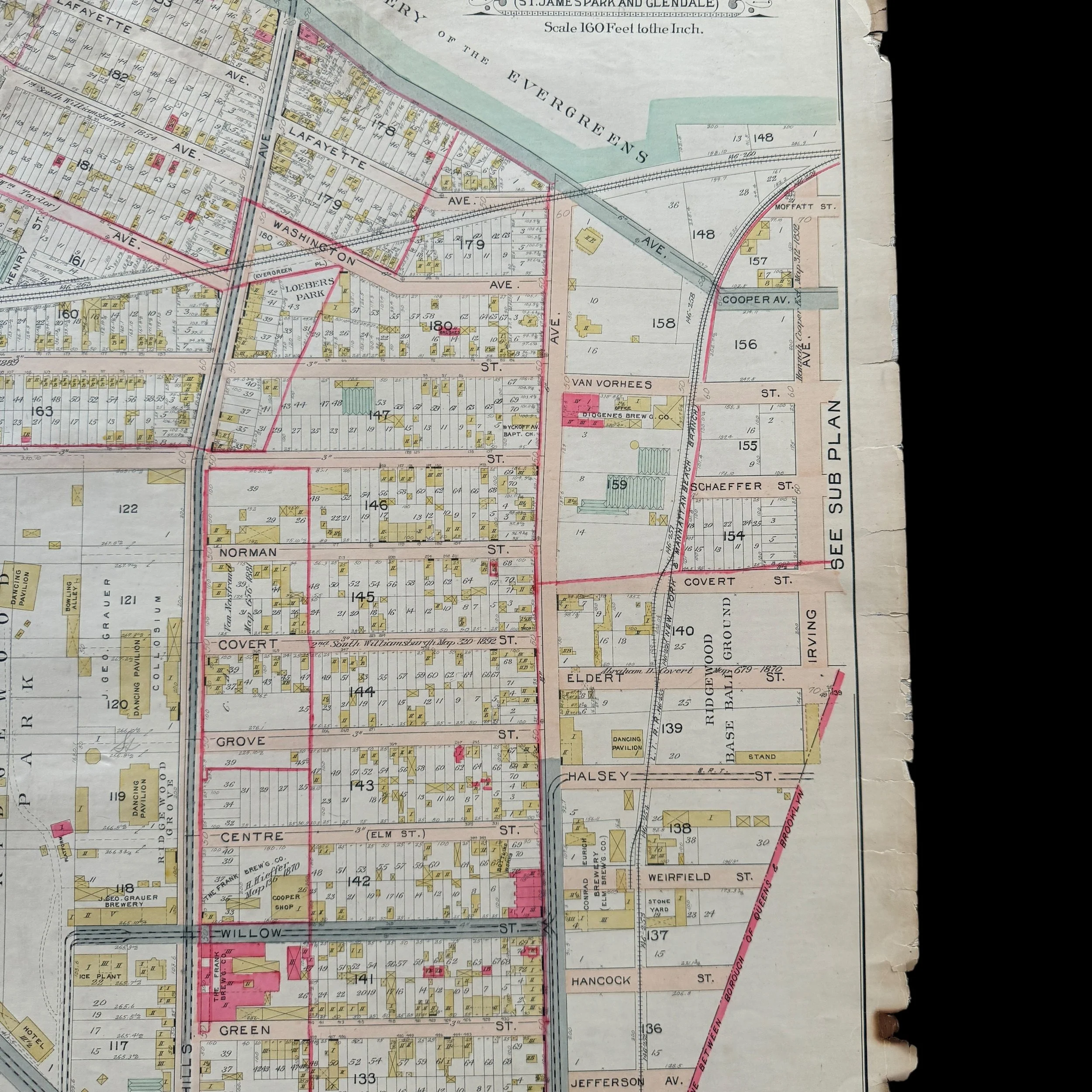
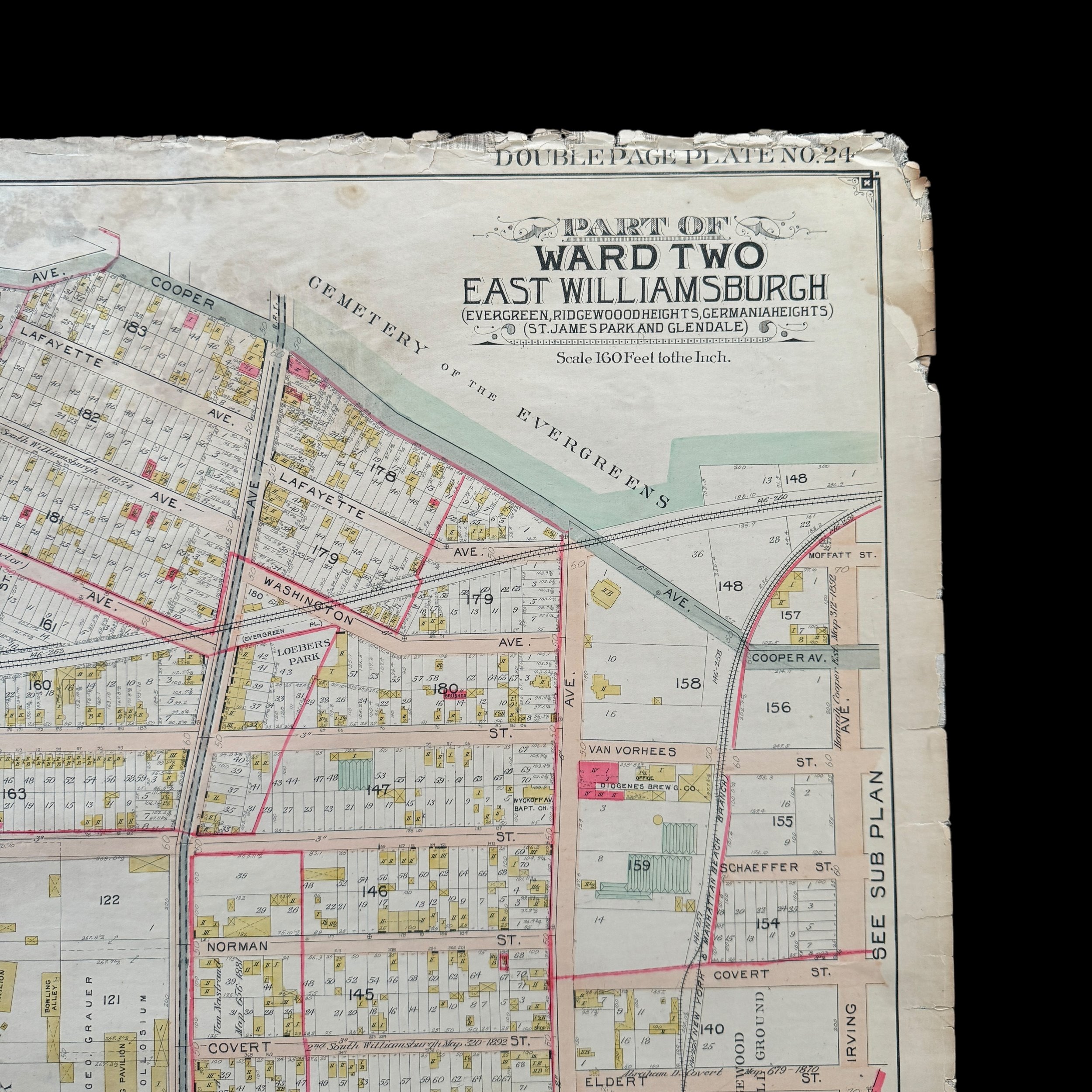
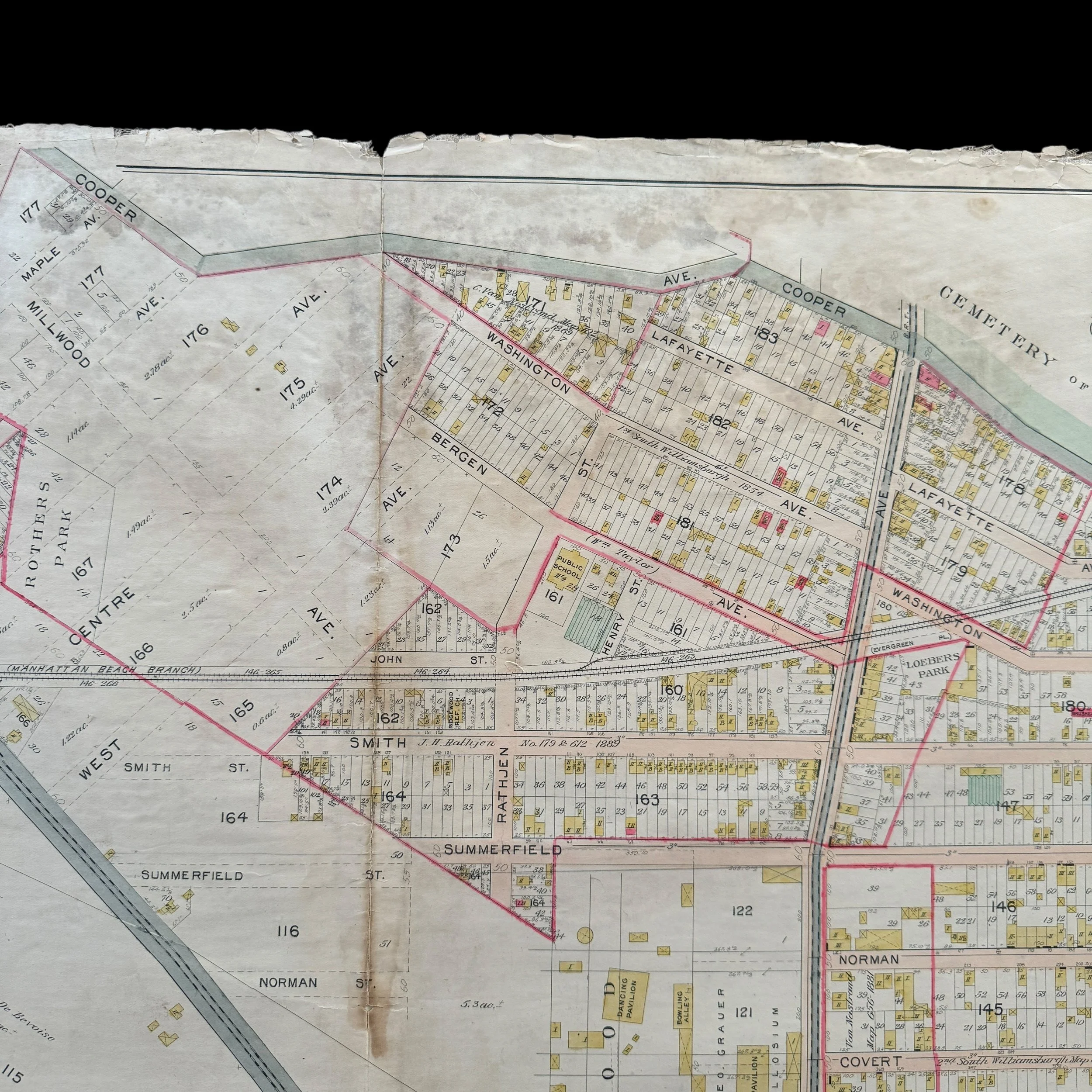
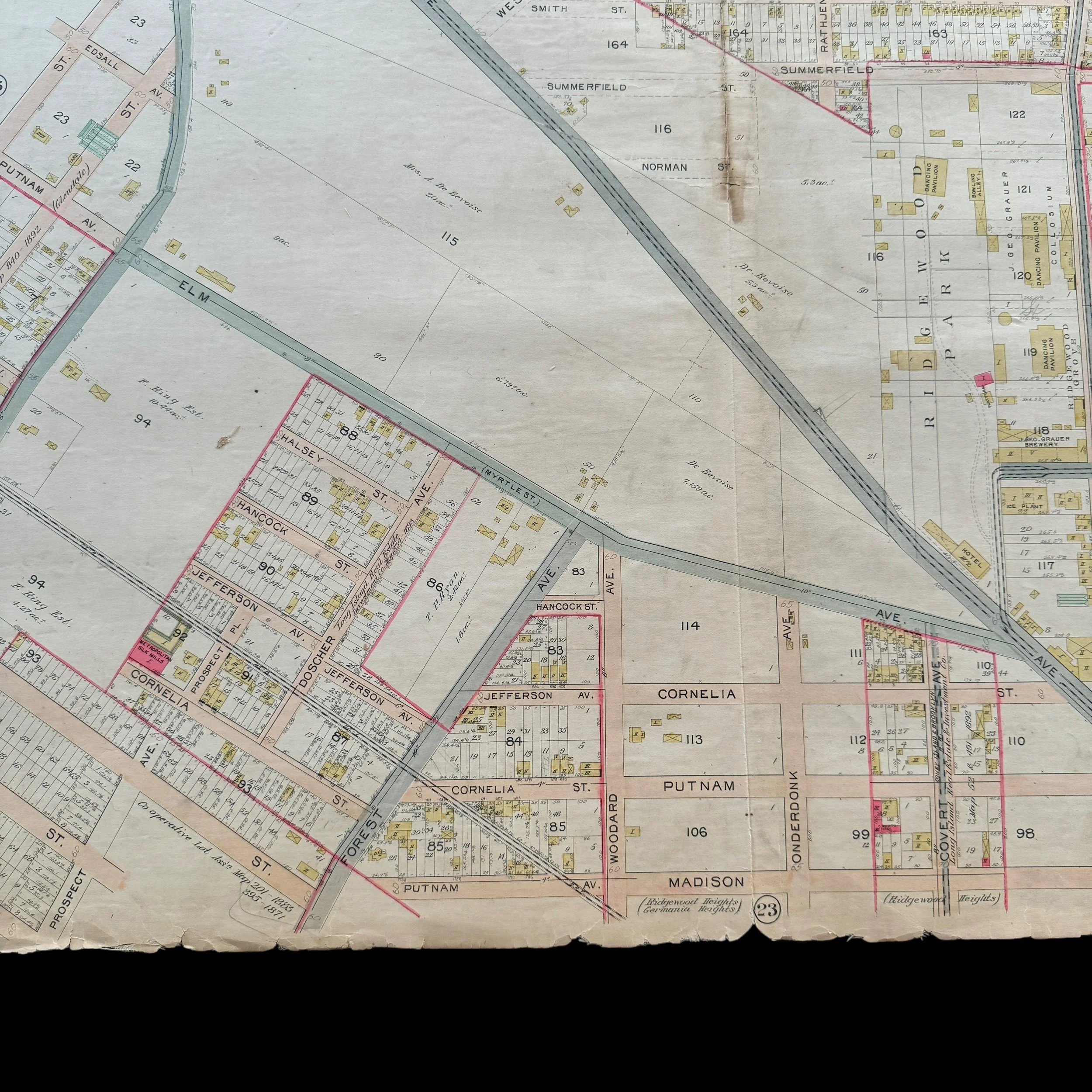

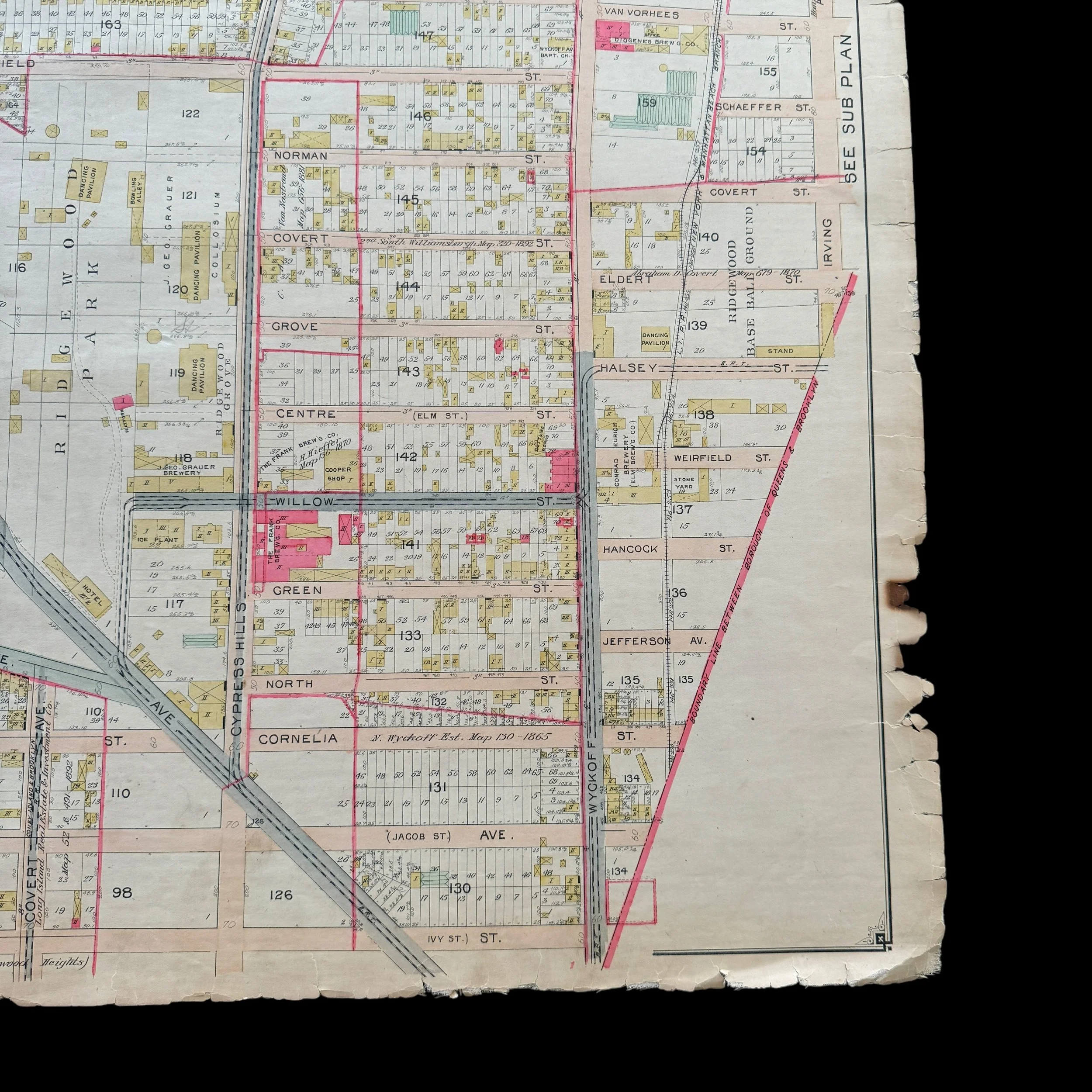
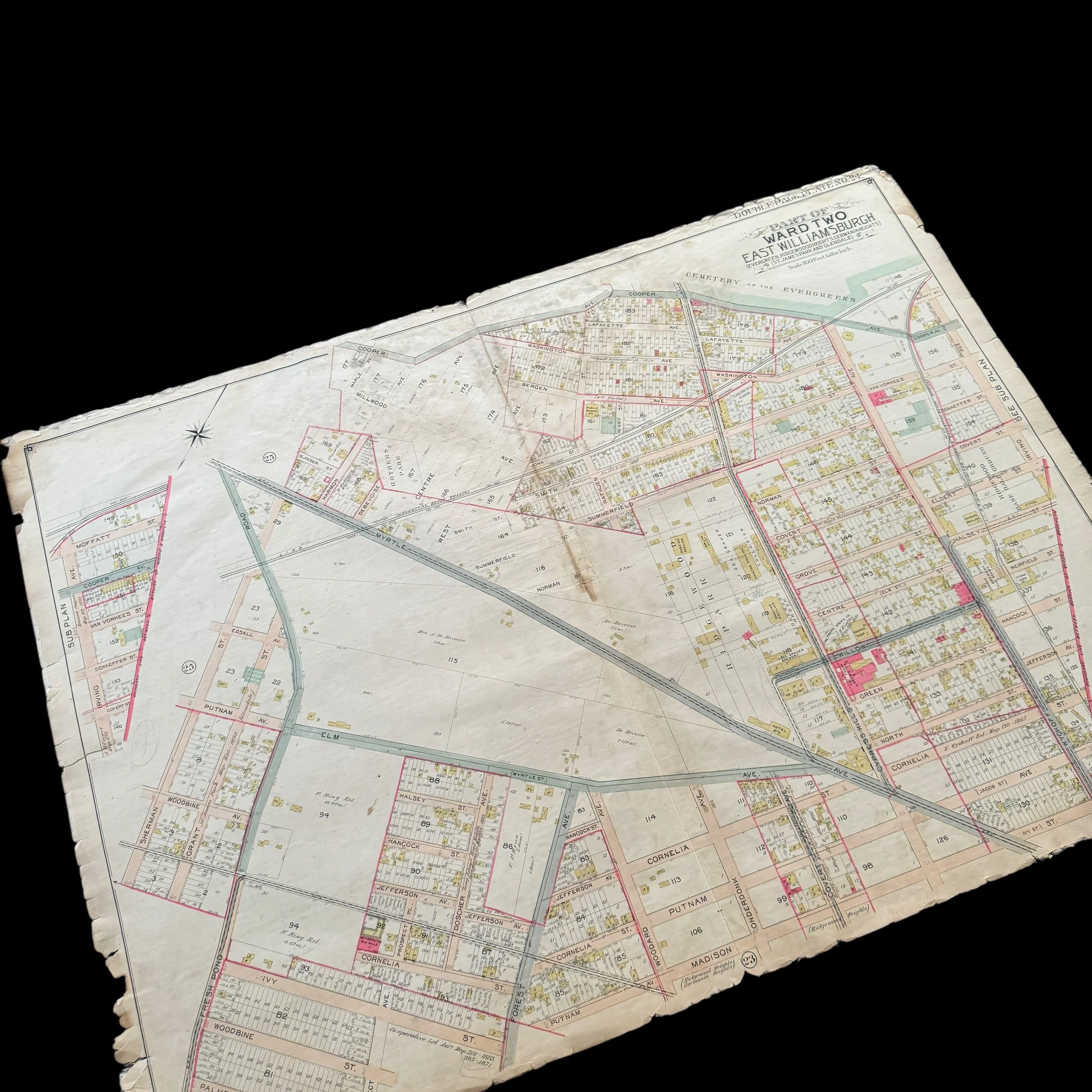
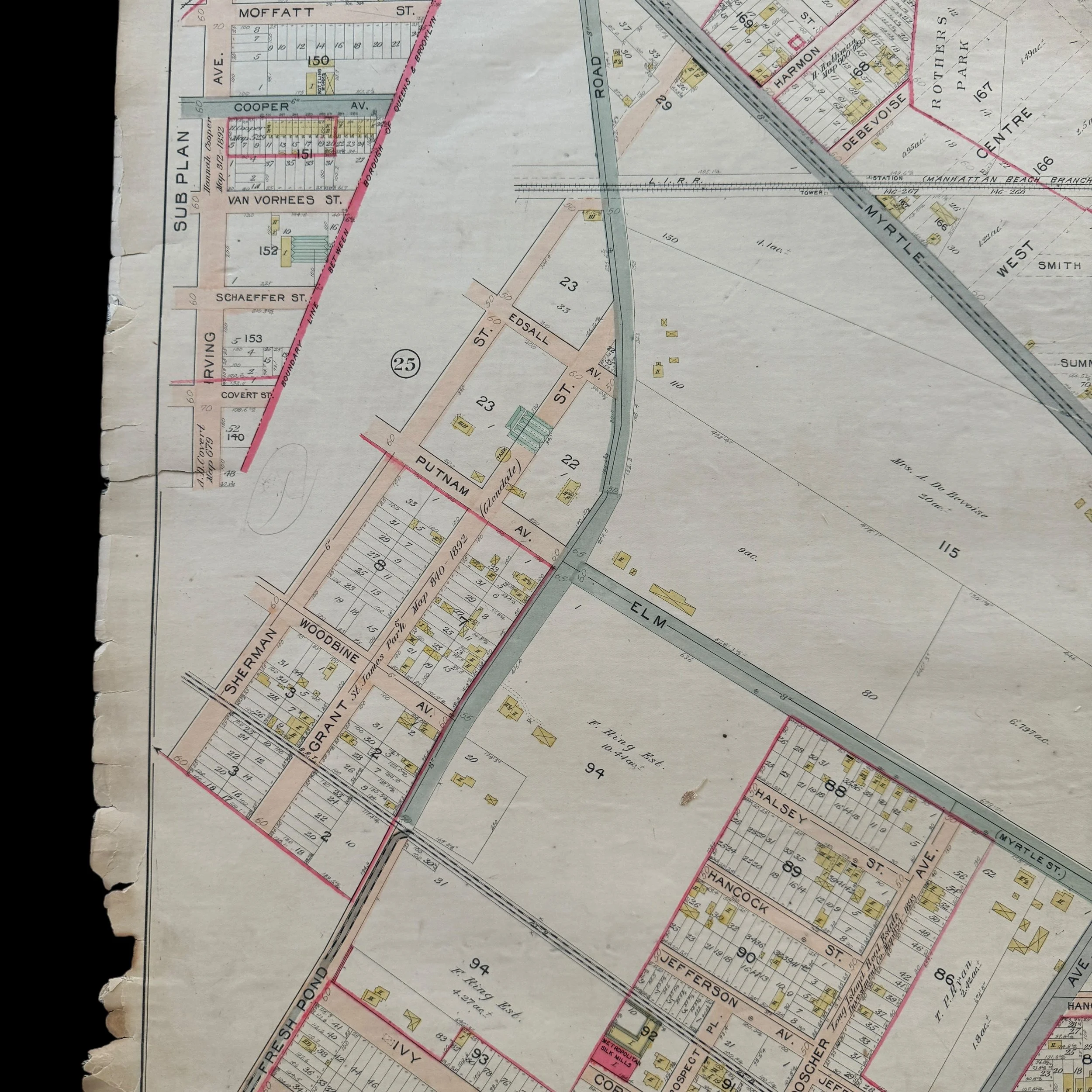























VERY RARE! Original 1903 New York City - East Williamsburg - Brooklyn Early 1900's NYC Blueprint Map (PLATE 24)
Comes with a hand-signed C.O.A.
Shows the original NYC 1900s boundary line between the borough of Queens and Brooklyn!
*This is an extremely rare piece of original early 1900s New York City history that would make a stunning centerpiece in any collection. Framed and displayed, this original 1903 NYC blueprint would not only serve as a captivating conversation piece but also as a tangible link to the city’s past. Its detailed craftsmanship and historical significance make it perfect for anyone passionate about New York City's rich architectural and urban development history. Whether featured in a private collection, office, or historical space, this rare blueprint is sure to become a treasured heirloom that celebrates the evolution of one of the world's greatest cities.
Size: 27 × 37 inches
Dated: 1903
Place: New York - Brooklyn - Queens
Publisher: E. Belcher Hyde
Features: Evergreen, Ridge Woodheights, Germaniaheights), (St. James Park and Glendale); [Map bounded by Cooper Ave., Irving Ave., Boundary Line between Borough of Queens and Brooklyn, Madison St., Putnam Ave., Prospect Ave.; Including Palmetto St., Fresh Pond Road, Grant St., Sherman St., Myrtle Ave., Glasser St.]; Sub Plan; [Map bounded by Irving Ave., Moffalt St., Cooper Ave., Van Vorhees St.; Including Schaeffer St., Covert St., Boundary Line between borough of Queens and Brooklyn
This extremely rare, museum-grade artifact from early 1900s New York City is an original 1903 blueprint map that is a heavily used and marked blueprint was created by the renowned cartographer and publisher E. Belcher Hyde, whose detailed real estate and property maps of New York City and Long Island in the late 19th and early 20th centuries are revered for their precision and historical significance.
At more than 100 years old, this original NYC blueprint is part of a larger series that meticulously documented various sections of New York City, including Queens, Brooklyn, and other boroughs. These maps captured the rapid urban development during a time of major transformation for the city.
In 1903, NYC was at the heart of significant change, having been incorporated into Greater New York City just five years earlier in 1898. The area was transitioning from a largely industrial and residential neighborhood into a more integrated part of the bustling metropolis. Detailed blueprints like this one were vital to guiding that development, serving as indispensable tools for real estate professionals, city planners, and developers.
E. Belcher Hyde's blueprint for NYC offered a wealth of information, from property boundaries and building footprints to street layouts, lot numbers, and ownership details. The blueprint also included railways, waterways, and industrial zones, making it an essential resource for planning new developments and infrastructure. These blueprints were not just practical but legal documents, often used to resolve disputes over property lines and land use.
Hyde’s attention to detail and accuracy in cartography ensured that his blueprints reflected the rapidly changing landscape of New York City at the turn of the century. Today, the 1903 blueprint is a valuable historical artifact, offering a detailed glimpse into the urban planning and development of Long Island City during this pivotal era.
Maps published by E. Belcher Hyde are now considered some of the most important historical documents of the time, providing an unparalleled snapshot of New York City’s growth, land use, and infrastructure at the height of their transformation into a global metropolis.
This is truly a once-in-a-lifetime opportunity to own a one-of-a-kind piece of New York City history. This original 1903 E. Belcher Hyde blueprint is the only known version available for purchase in the public sector. With the majority of these rare blueprints held in private museum collections, opportunities like this are exceedingly rare, making this a unique chance to own an authentic artifact of New York’s early 20th-century development.
East Williamsburg, a neighborhood in Brooklyn, New York City, has a rich and layered history that reflects the broader changes experienced by New York City during the early 20th century. In the early 1900s, East Williamsburg was a hub of industrial activity, shaped by a thriving manufacturing sector, waves of immigration, and a bustling urban culture. It was a place where factories, warehouses, and working-class residential communities coexisted, creating a dynamic neighborhood that was vital to the city's economy. This period marked a formative era for East Williamsburg, laying the foundations for the neighborhood’s evolution in the decades to come.
Origins and Early Development
East Williamsburg’s origins go back to the 19th century, when it was a largely rural area before gradually transforming into an industrial hub. Williamsburg was originally part of the Town of Bushwick and became incorporated into Brooklyn in the early 19th century. By the late 1800s, Williamsburg (including what is now East Williamsburg) was already attracting businesses and industries due to its proximity to the East River, which allowed for easy transportation of goods and materials.
As New York City continued to grow and develop, East Williamsburg began to fill with factories, warehouses, and manufacturing plants, creating job opportunities and attracting waves of new residents. The development of railroads and trolley lines through the area further boosted its appeal as a manufacturing center. By the early 1900s, East Williamsburg had become a densely populated neighborhood that was home to a diverse working-class population, many of whom were immigrants or children of immigrants from Europe.
Industrial Boom of the Early 1900s
The early 1900s marked a period of intense industrialization for East Williamsburg. Numerous factories and businesses set up shop in the neighborhood, benefiting from its proximity to the East River and growing transportation infrastructure. Manufacturing facilities in East Williamsburg produced a wide range of goods, including textiles, glass, chemicals, and metal products. Many factories specialized in food processing, while others produced construction materials needed for the rapid expansion of New York City’s infrastructure.
One of the defining characteristics of East Williamsburg during this period was the mix of small factories and large industrial plants. Large manufacturers operated alongside small, family-run businesses, creating a complex industrial ecosystem that supported both the city’s economy and local employment. Many of these industries relied on the labor of immigrants, who made up a significant portion of the neighborhood’s population.
The area's industrial character also brought logistical benefits. Goods produced in East Williamsburg could be transported via both the rail lines that passed through the area and the East River docks, which facilitated trade within the city and beyond. The neighborhood’s industrial economy contributed to the growth of New York City as a major manufacturing center, with East Williamsburg serving as one of the primary hubs for industrial production in Brooklyn.
Immigrant Communities and Social Life
The industrial boom of East Williamsburg in the early 1900s attracted waves of immigrants, particularly from Italy, Poland, Germany, and Eastern Europe. These new residents were drawn to the neighborhood by the availability of jobs in factories and warehouses, and many established tight-knit communities that preserved their cultural traditions while adapting to life in New York City. Italian immigrants, for example, became a significant presence in East Williamsburg, forming their own social networks, businesses, and religious institutions.
These immigrant communities played a crucial role in shaping the neighborhood’s social fabric. Churches, community centers, and social clubs became central to life in East Williamsburg, offering support and fostering a sense of belonging. Religious institutions, especially Catholic and Eastern Orthodox churches, provided not only spiritual guidance but also social services, cultural events, and language classes for new immigrants. These institutions became important pillars of the community, helping immigrant families navigate the challenges of adapting to a new country while maintaining ties to their heritage.
In addition to churches, ethnic social clubs and mutual aid societies played an important role in supporting East Williamsburg’s immigrant residents. These organizations offered assistance to families in need, organized social events, and provided a place for immigrants to connect with others from their home countries. Through these community networks, East Williamsburg’s immigrant populations maintained cultural traditions, celebrated festivals, and formed a resilient social fabric that provided stability in a rapidly changing urban environment.
Housing and Living Conditions
In the early 1900s, the rapid growth of East Williamsburg’s population and industrial sector led to significant housing challenges. Many of the neighborhood’s new residents were factory workers who could only afford low-cost housing, leading to the construction of tenements and other inexpensive, densely packed residential buildings. Tenements, often cramped and lacking in basic amenities, became a defining feature of the area’s working-class housing.
Living conditions in East Williamsburg were often challenging, as housing developments struggled to keep up with the population influx. Families frequently lived in small, overcrowded apartments, and basic utilities like indoor plumbing and reliable heating were not guaranteed in many buildings. The close proximity of residential buildings to factories and warehouses also contributed to poor air quality, as emissions from industrial activity were a constant presence in the neighborhood.
Despite these difficulties, East Williamsburg’s residents developed a sense of community resilience. Families often relied on neighbors and community networks for support, and a strong sense of camaraderie emerged among the working-class population. In the face of challenging living conditions, East Williamsburg’s residents built a sense of solidarity, with local businesses, churches, and social organizations providing much-needed support.
Transportation and Infrastructure Development
The expansion of New York City’s transportation infrastructure in the early 20th century further boosted East Williamsburg’s growth and integration into the broader city. Railroads and trolley lines connected the neighborhood to other parts of Brooklyn and Manhattan, making it easier for residents to commute to work and access goods and services. The introduction of trolley lines running through Brooklyn helped residents move around the borough more easily, while the Long Island Rail Road provided additional connectivity to both New York City and Long Island.
The early 1900s also saw improvements in East Williamsburg’s infrastructure, with new roads, bridges, and public services being introduced to accommodate the growing population. The completion of the Williamsburg Bridge in 1903, connecting Brooklyn to Manhattan, significantly impacted the neighborhood, as it allowed workers and goods to move between the boroughs more efficiently. This bridge transformed East Williamsburg’s economy by facilitating easier trade and commuting options, thereby strengthening the neighborhood’s role as an industrial and residential area.
Environmental and Health Concerns
The heavy industrialization of East Williamsburg came with environmental and health challenges that affected the quality of life for residents. Factories and industrial plants released pollutants into the air and waterways, contributing to poor air quality and water contamination. Industrial waste was often disposed of improperly, and neighborhoods near factories faced issues with toxic emissions and pollutants. These conditions led to health problems among residents, especially respiratory ailments caused by poor air quality.
East Williamsburg’s environmental issues reflected broader trends in industrial cities during the early 20th century, where economic growth often came at the expense of public health. Efforts to regulate industrial emissions and waste disposal were limited at the time, and residents had little recourse to address these issues. The health and environmental challenges faced by East Williamsburg’s residents were part of the price paid for the area’s economic prosperity, a trade-off that would not be fully addressed until later in the century.
Decline and Transition
As the 20th century progressed, the industrial character of East Williamsburg began to shift. By the 1950s and 1960s, many of the factories that had defined the neighborhood started to close or relocate, a trend driven by changes in manufacturing technology and the rise of global competition. This decline in industry led to a loss of jobs and a shift in the neighborhood’s demographics, with younger residents seeking employment opportunities in other parts of the city or outside of New York altogether.
Despite the industrial decline, East Williamsburg retained much of its working-class character and continued to serve as a home for immigrant communities. By the latter half of the 20th century, East Williamsburg experienced another wave of immigration, with Latin American and Caribbean communities adding to the neighborhood’s cultural diversity. The area began to attract artists and creatives, who found inspiration in its industrial spaces and affordable rents, setting the stage for East Williamsburg’s transformation in the 21st century into a hub for artists, small businesses, and new development.
Legacy of Early 20th Century East Williamsburg
The early 1900s left an indelible mark on East Williamsburg, shaping its identity as a working-class neighborhood with a rich industrial heritage and a diverse immigrant community. This period saw the neighborhood’s growth as a manufacturing center, driven by the industries that supported New York City’s economy and employed generations of immigrants who made their homes there. The social and cultural networks formed during this era created a strong sense of community that endured through both economic highs and lows.
Today, East Williamsburg’s legacy is reflected in its architecture, with former factories and warehouses repurposed as studios, galleries, and residential lofts. The neighborhood’s history as an industrial powerhouse and immigrant community is woven into its streets, contributing to its unique character as a place where past and present converge. As East Williamsburg continues to evolve, the history of the early 1900s serves as a reminder of the neighborhood’s resilience and adaptability, qualities that remain integral to its identity in the present day.